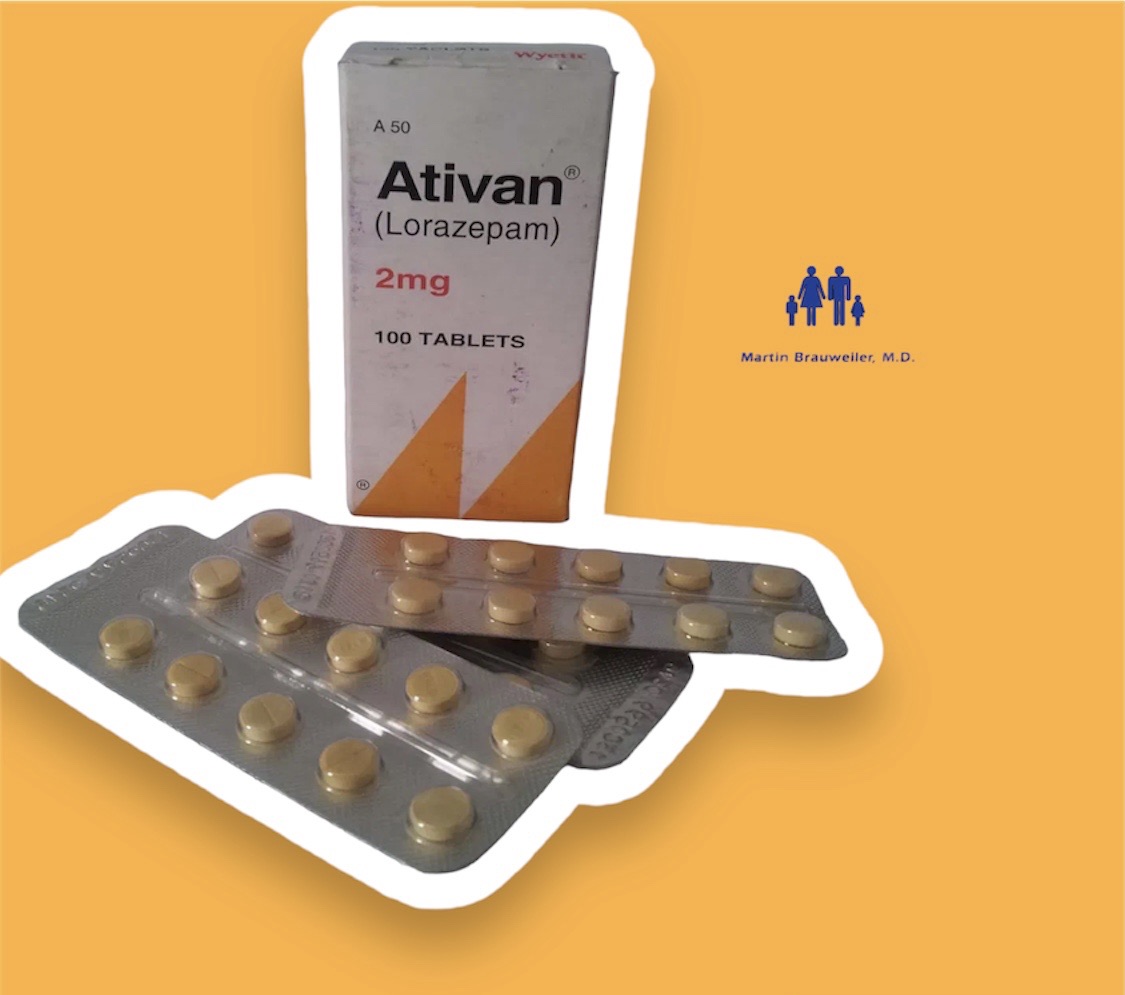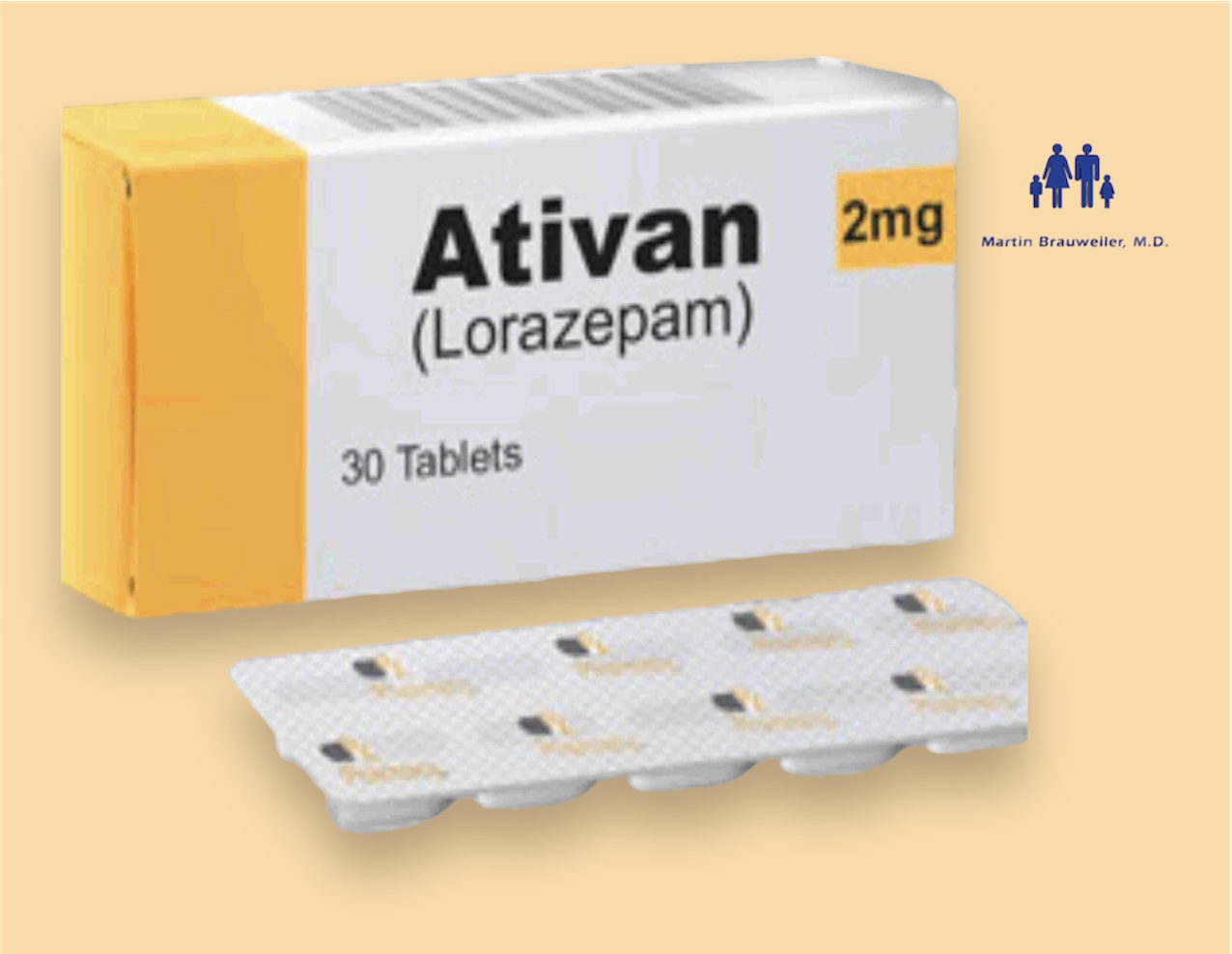Where to Buy Ativan(Lorazepam)2,5mg Online Without a Prescription?
 The effects of anxiety states, which persist in the long term, can exert emotional stress on the patient, as well as interfere with all aspects of daily life. To avoid its symptoms and the consequences that it entails, intervention through psychological and pharmacological therapy is necessary.
The effects of anxiety states, which persist in the long term, can exert emotional stress on the patient, as well as interfere with all aspects of daily life. To avoid its symptoms and the consequences that it entails, intervention through psychological and pharmacological therapy is necessary.
Benzodiazepines are the pharmacological treatment of choice in these cases. This group includes Ativan (lorazepam), which presents numerous benefits when accompanied by psychological therapy, providing the patient with support for recovery.
| Drug Name: | Ativan (Lorazepam) | ||
|---|---|---|---|
| Tablet Strength: | 160 pills x 2.5mg | ||
| Best Price: | $484.00 | Per Pill | $2.48 per pill |
| Where to buy Ativan? |
|
What is Ativan?
Lorazepam is a tranquilizer and anxiolytic that fits into the category of highly effective benzodiazepines. This type of anxiolytic has the ability to stabilize the mental state in a way that does not cause harm or interfere with the activities or daily tasks of the person taking it.
In addition, one of the benefits that Ativan offers to other types of benzodiazepine is that it acts on the emotional elements, eliminating them. Thus, it eliminates the tendency to suffer from disorders based on emotional and psychoreactive stress.
Use of this drug
Prescription of lorazepam is mainly limited to the treatment of anxiety disorders and to alleviate both short-term and long-term symptoms associated with this change. In particular, in cases where the symptoms interfere with or limit the life of the patient.
However, it is necessary for a specialist clinician to regularly analyze and evaluate the effectiveness of the drug since clinical studies have not confirmed its chronic use, in addition, Ativan can cause dependence in a person, both physical and psychological.
In addition, lorazepam is also recommended for the treatment of many other diseases or conditions. These include:
-
Irritable Bowel Syndrome.
-
Epilepsy.
-
Insomnia.
-
Treatment for nausea and vomiting caused by cancer treatment.
-
Management of agitation caused by withdrawal syndrome.
Dosage and administration
The usual dose is limited to two or three daily doses of approximately 2.5 mg of the product. However, for the best possible results, it is recommended that a healthcare professional set the frequency and duration of administration individually. Similarly, if it is necessary to increase the daily dose, it is necessary to act gradually, eliminating possible side effects.
Due to the high tolerance that this drug generates, it is desirable that Ativan be used only for short periods of two to four weeks. In this way, the risk of physical dependence caused by its long-term consumption is also eliminated, and with it, withdrawal symptoms occur. These symptoms are:
How to use
A doctor should establish the course of treatment with Xanax tablets. The dose differs depending on the disease and the condition of the patient. So, with anxiety, it is recommended to take from 0.25 to 0.5 mg per day, three times a day. For the treatment of depression and panic disorders, it is necessary to take 0.5 mg three times a day. Elderly patients and people with poor health are not prescribed more than 0.25-2 mg three times a day. Increase the dose if necessary and reduce it, finishing treatment, you need to gradually.
-
Alarm states.
-
Change of feelings.
-
Insomnia.
-
dysphoria.
-
Psychosis and convulsions (to a lesser extent).
Side effects of Ativan
 As with most medicines, no matter what effect or purpose they have, Ativan can also come with a number of side effects and risks.
As with most medicines, no matter what effect or purpose they have, Ativan can also come with a number of side effects and risks.
It is important to be able to recognize them and therefore change doses or switch to a different type of benzodiazepine.
These side effects can be classified as:
-
Feeling tired.
-
Asthenia.
-
Muscle weakness.
-
Ataxia.
-
Feeling embarrassed.
-
Feeling tired.
-
Dizziness.
-
Nausea.
-
Changes in libido.
-
Impotence
-
Descent orgasms.
-
Allergic skin reactions.
-
Thrombocytopenia, or a decrease in the number of platelets in the blood.
-
agranulocytosis, or a decrease in the number of neutrophils in the blood.
-
Depression of the central nervous system.
-
Breathing problems.
In case the patient experiences any of the above-mentioned side effects, it is advisable that he or she visit the doctor as soon as possible.
Precautionary measures
A number of indications or conditions should be considered before starting Ativan treatment, as it is not indicated for all types of people. In the following cases, its consumption is not recommended, or at least the patient should be careful about the possible complications that it can cause.
The use of Ativan is discouraged by people who are allergic to this active principle, as well as to any of the elements included in this pharmaceutical specialty. The symptoms or side effects that a patient may suffer from range from difficulty breathing or asthma attacks to swelling, hives, or anaphylactic shock. Other cases in which the use of lorazepam is prohibited are when a person suffers from myasthenia gravis, severe breathing difficulties, sleep apnea, or if you have severe liver disease.
It is necessary that the patient informs his doctor in case he is taking any other type of medication, including one that can be obtained without a prescription, in order to avoid any possible interference or harmful effects on the body as a result of the drug combination.
In addition, the patient needs to be aware that both barbiturates and alcoholic beverages have a depressant effect on the central nervous system, therefore, if they are administered or taken together, the sedative effects of the drug are greatly enhanced and harmful.
On the other hand, there are a number of special circumstances in which people should be careful when taking this medication or not taking it directly. These conditions include pregnancy and lactation, children, elderly and physically weak patients, people with respiratory failure, driving and using machinery.
